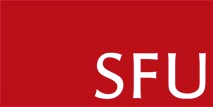


IEEE
Circuits and Systems Society Joint Chapter of the Vancouver/Victoria Sections
IEEE Circuits and Systems Society Distinguished Lecturer Program
Multiview Video Coding

Speaker: Dr. Huifang Sun
IEEE CAS Society Distinguished Lecturer
Vice President & Deputy Director, Research Fellow
Mitsubishi Electric Research Laboratories (MERL)
Cambridge, MA, USA
Dates and Locations
Tuesday, July 15, 2008, 3:00 pm to 4:00 pm
IRMACS Presentation Studio, ASB 10900 (SFU Map)
Refreshment will be served after the talk.
![]()
Please click here to play the WebEx record of Dr. Sun's talk.
Please click here to download the pdf file of the slides.
Abstract
In this lecture, we describe the prediction of select views based on view synthesis methods. The potential advantage of this form of prediction over traditional spatial prediction is that the synthesized view attempts to reconstruct the view from neighboring views using camera parameters and depth information. Such an approximation of the view to be coded could have significant advantages in fast moving areas of a scene and for objects that undergo non-translational motion by providing a better predictor of the frame.
![]()
Biography of Dr. Huifang Sun
Huifang Sun graduated from Harbin Engineering Institute, China, and received the Ph.D. from University of Ottawa, Canada. He joined Electrical Engineering Department of Fairleigh Dickinson University in 1986 and was promoted to an Associate Professor before moved to Sarnoff Corporation in 1990. He joined Sarnoff Lab as a member of technical staff and was promoted to Technology Leader of Digital Video Communication later. In 1995, he joined Mitsubishi Electric Research Laboratories (MERL) as Senior Principal Technical Staff and was promoted as Vice President and Fellow of MERL in 2003. His research interests include digital video/image compression and digital communication. He has coauthored two books and more than 150 Journal/and conference papers. He holds 48 US patents. He received Technical Achievement Award in 1994 at Sarnoff Lab. He received the best paper award of 1992 IEEE Transaction on Consumer Electronics, the best paper award of 1996 ICCE and the best paper award of 2003 IEEE Transaction on CSVT. He is now an Associate Editor for IEEE Transaction on Circuits and Systems for Video Technology and was the Chair of Visual Processing Technical Committee of IEEE Circuits and System Society. He is an IEEE Fellow.
![]()
Please click here after 2:45pm on July 15, 2008 to join the WebEx-based webcast for the lecture. The password is "message".
Please click here for a quick guide for WebEx (written by Prof. Jim Cavers).
If we could not establish the webcast due to network problem, we will record the lecture offline using WebEx software and post it on the website later.
![]()
Contact
Please contact Dr. Jie Liang (Email: JieL at sfu dot ca) if
you have any question.